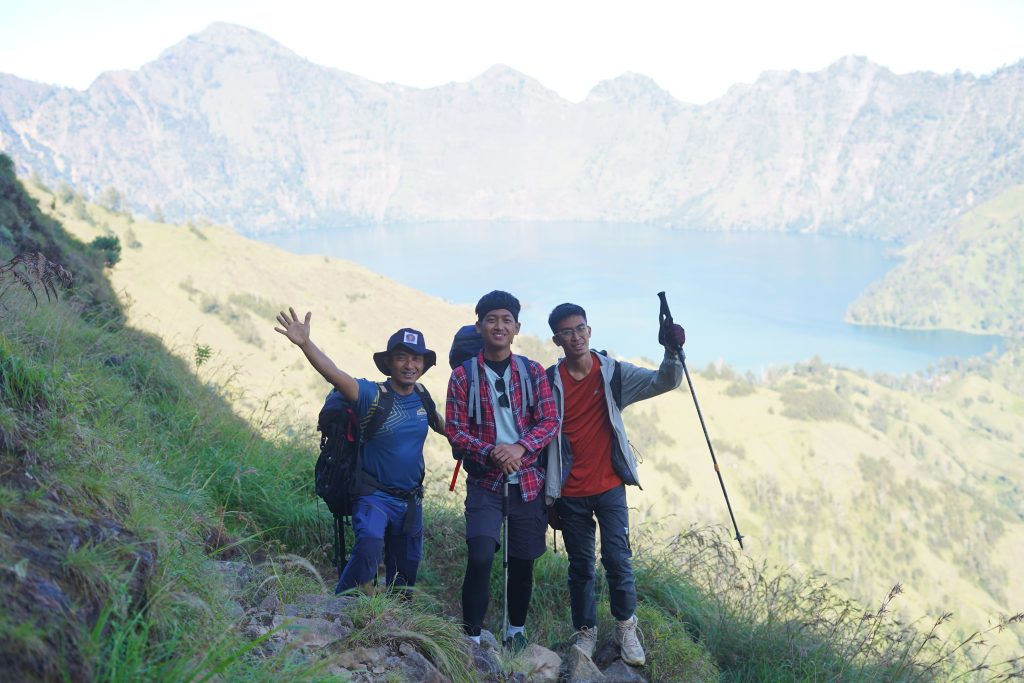Mount Rinjani, the second-highest volcano in Indonesia, is a legendary destination for adventure seekers and nature enthusiasts. Rising majestically to 3,726 meters above sea level, this towering peak on the island of Lombok offers one of the most spectacular trekking experiences in Southeast Asia. A trek to Mount Rinjani is not just a hike; it is a journey into breathtaking landscapes, challenging trails, cultural encounters, and unforgettable moments that stay with you for a lifetime.

In this comprehensive guide, we share everything you need to know about the Mount Rinjani trek, from preparation and trekking routes to highlights, cultural significance, and essential tips.
Why Trek Mount Rinjani?
Mount Rinjani is more than just a volcano. It is a destination that combines stunning natural beauty, cultural traditions, and adventure. The trek offers:
- Panoramic views of the Lombok coastline, Gili Islands, and even Bali’s Mount Agung.
- The stunning Segara Anak Crater Lake, a turquoise lake inside the caldera.
- The chance to soak in natural hot springs, perfect for relaxing sore muscles.
- A challenging but rewarding climb to the summit at sunrise, offering views above the clouds.
- Opportunities to experience Sasak and Balinese culture, as Rinjani is a sacred mountain for local communities.
Best Time to Trek Mount Rinjani
The Rinjani trekking season typically runs from April to December, when the weather is dry and trails are open.
- April – June: Lush greenery, fewer tourists, and pleasant weather.
- July – August: Peak trekking season with many climbers, especially during school holidays.
- September – October: Still good weather, less crowded, and excellent for photography.
- November – December: Possible rain showers but still accessible before closure.
- January – March: The park is closed due to heavy rains and safety concerns.
Popular Mount Rinjani Trekking Routes
There are several trekking routes to Mount Rinjani, each offering unique experiences. The two main gateways are Senaru and Sembalun.
1. Senaru Route
- Starting Point: Senaru Village (601 m)
- Duration: 2–4 days
- Highlights: Dense rainforest, waterfalls, crater rim, views of Segara Anak.
- Difficulty: Moderate to challenging.
2. Sembalun Route
- Starting Point: Sembalun Village (1,156 m)
- Duration: 2–4 days
- Highlights: Vast grasslands, hot springs, crater lake, summit climb.
- Difficulty: Challenging, especially the summit push.
3. Senaru – Sembalun Combination
- Many trekkers choose to start in Sembalun (for summit access) and descend via Senaru (to enjoy the rainforest and waterfalls).
- This is the most recommended route for those who want the complete Rinjani experience.
Mount Rinjani Trekking Packages
Most treks are guided tours offered in 2D/1N, 3D/2N, or 4D/3N packages.
- 2 Days / 1 Night: Short trek to the crater rim (Senaru or Sembalun).
- 3 Days / 2 Nights: Classic trek including crater rim, Segara Anak Lake, hot springs, and summit.
- 4 Days / 3 Nights: Complete Rinjani experience with extra time to explore and enjoy.
Highlights of the Mount Rinjani Trek
1. The Summit (3,726 m)
The ultimate challenge. Reaching the Rinjani summit at sunrise is a dream for trekkers. The final ascent is steep, sandy, and exhausting, but the reward is 360-degree panoramic views stretching across Lombok, Sumbawa, and Bali.
2. Segara Anak Crater Lake
Nestled at 2,000 meters, this turquoise lake is the heart of Rinjani. Its name means “Child of the Sea”, as locals believe the lake is connected to the ocean. Many trekkers take time here to relax and explore.
3. Natural Hot Springs
Close to the lake, natural thermal springs provide a soothing bath after days of trekking. Locals also use these springs for spiritual purification.
4. Senaru Waterfalls
Before or after your trek, visiting Sendang Gile and Tiu Kelep Waterfalls near Senaru is a must. Surrounded by lush rainforest, these waterfalls are breathtaking spots to unwind.
5. Flora and Fauna
The national park is home to unique wildlife, including ebony leaf monkeys, long-tailed macaques, barking deer, and a variety of bird species. The changing ecosystems—from tropical forest to alpine meadow—make the trek diverse and fascinating.
Cultural and Spiritual Significance
For the Sasak people of Lombok and Balinese Hindus, Mount Rinjani is a sacred mountain. Ritual offerings are often made at the crater lake during religious ceremonies. Trekkers are encouraged to respect local traditions and the spiritual importance of the mountain.
Physical Preparation for Mount Rinjani
The trek is challenging, so preparation is essential.
- Strengthen your lower body by practicing lunges, squats, and climbing stairs.
- Improve endurance with hiking, jogging, or cycling.
- Carry a good backpack and practice hiking with weight.
- Adjust to altitude if possible; Rinjani’s summit climb is physically demanding.
Essential Gear for the Trek
Packing smart is crucial for comfort and safety.
- Hiking boots with good grip.
- Warm clothing, as temperatures drop below freezing at the summit.
- Rain jacket for unpredictable weather.
- Headlamp for the early morning summit push.
- Trekking poles to ease pressure on knees.
- Water bottles and hydration packs.
- Personal snacks and energy bars.
The majority of trekking companies supply camping gear, sleeping equipment, and food during the hike.
Tips for a Successful Mount Rinjani Trek
- Book with licensed trekking companies to ensure safety and ethical treatment of porters.
- Travel with proper insurance, covering trekking at high altitudes.
- Acclimatize before the trek by staying in Senaru or Sembalun for a night.
- Carry cash, as there are no ATMs near the trekking gates.
- Respect the environment – pack out trash and follow Leave No Trace principles.
- Listen to your guide for pacing and safety on steep, sandy trails.
Conclusion
The Mount Rinjani trek is one of the most thrilling adventures in Indonesia, blending natural wonders, cultural depth, and physical challenge. Whether you aim to conquer the summit or simply marvel at the crater lake, every step offers an unforgettable experience. With proper preparation, respect for nature, and the guidance of experienced local porters, your Rinjani journey will be a once-in-a-lifetime adventure.

